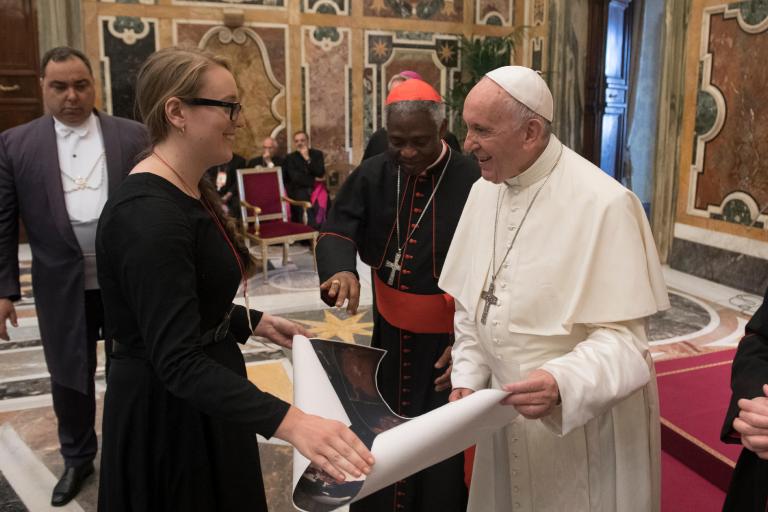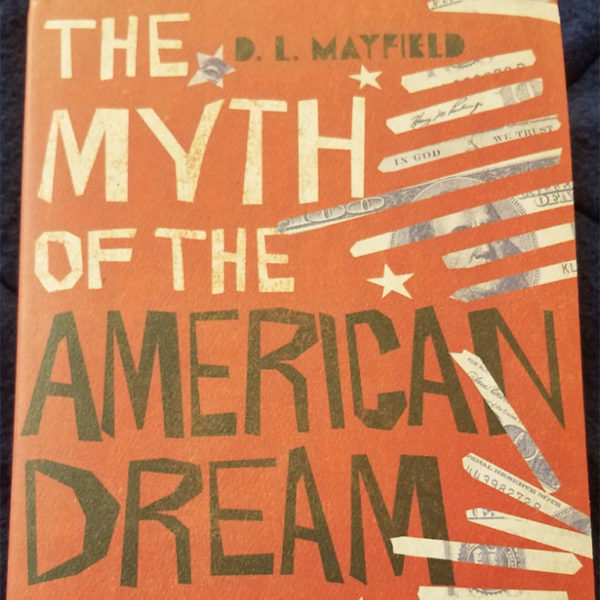Nick Cave and the ‘Jesus Idea’
During my commute to and from work on the bus the past few weeks, I’ve been listening to snippets of “Faith, Hope & Carnage,” an audiobook of rich conversations between Nick Cave, the Australian singer-songwriter, and Irish journalist Seán O’Hagan. They talk about the meaty heartaches and joys of what it means to be alive, touching on the pandemic, the recent death of Cave’s 15-year-old son, the consuming ache of grief, the music industry, spiritual transformation, hope and how the creative process in enmeshed in all of this.

So much of what Cave says about grief, God, and creativity struck something deep and guttural inside me. Listening to this audiobook while on the bus, watching bare trees and sky and gray-brick buildings out the window, had me reflecting, in a particular, yearning way, on the creative process; of how layered and visceral and tangled it is in everything.
“I don’t think we can not talk about [grief] if we are talking about the creative process,” Cave says in the audiobook. “The creative process is not part of one’s life, but life itself and all that it throws at you. For me, it was like the creative process — if we want to call it that — found its real purpose [in grief].”
I’ve been thinking of this in light of Lent, and how it’s necessary, I think, to go through times of real heartache — even desert-like apathy — and almost-agonized waiting in order for something true and new to be born from our imaginations. In the book, Cave explains his creative process: He chooses a specific date as a starting point for a record, and all the lyric writing gets done “from the ground up from the allotted date.”
The resurrection is the full depth of creativity, and we get tastes of it in the thrill and spark of human imagination.
“Writing songs is a bloody business, especially at the beginning,” he says. “You start from deprivation, complete lack. That’s when you’re confronted with yourself minus your ideas.”
Choosing to embark on a creative project or pursuit is a deeply vulnerable experience. In choosing to begin, you are confronted with your blank sheet of a self. You start to question everything — if you are worthy or capable of such a task as this idea is demanding of you. Sometimes, in this state of being, I become consumed to the point of feeling guilty for any time spent not working on the project. I daydream a lot. It feels like a flurry of emotion and unsettledness and excitement and fear.
“The creative process can be so demeaning,” Cave says in the book. “It’s odd that even though I’ve made many records and this always happens, it can still plunge me into a really distressing place where I’m met with the most counterproductive thoughts. It affects everything. My capacity, relationship, all in a bad light. The perennial drama of songwriting. Then suddenly it changes, and the lights come on. Things start falling into place. The good ideas suddenly present themselves, rise up off the page, and begin to hold hands. Not all at once, necessarily, but rapidly. That’s the thrilling part, the best part of songwriting. The drosses falling away to reveal the songs.”
This cycle he talks about — the counter-productive thoughts and energy transformed when ideas start holding hands and revealing themselves — really resonated with me. A huge part of the creative process for me has become trust, having faith in that which moves me to create, the spirit churning in my gut. Nothing ever does come, until it does.

Cave continues: “I was reminded of that beautiful notion of William Blake’s, of Jesus being the imagination. And also that startling image from Matthew 27: Mary Magdalene and the other Mary who remain standing in front of the tomb. That made me think of what it’s like to experience the birth of a creative idea. It’s like you are waiting for the Christ to appear, to step from the tomb and reveal himself.”
The Paschal Mystery feels like its own meditation on the creative process: the letting go of the comfortable and the dying and grief and change and waiting in vigil and the rejoicing in new life, new creations. And how we must go through all of it to experience the fullness of what it means to live and create. The resurrection is the full depth of creativity, and we get tastes of it in the thrill and spark of human imagination.
“In order for [the creative idea] to happen, you have to be patient,” Cave says. “You must have faith. And often you must do the waiting alone. You have to have forbearance, a tolerance of the process itself, and also an alertness. It is easy to lose one’s nerve, to run away like the apostles did, to go do something else. But we do that at our peril. That’s when you risk losing the astonishing idea, the Jesus idea.”

I love the language that Cave puts around this, the “waiting in vigil for the Risen Christ,” waiting in agitated hope for the threads and ideas to reveal their connections, for their newness and unexpectedness and simple joy to transform. We have to keep showing up for our creative work. It is then, in times when I’ve been attentive and patient, that the words and ideas often come together in ways I could not have anticipated or conjured or expected until that exact moment when they say, here I am! Look! And I go, how can this be? And also, yes!
I want to always trust that the drosses will fall, that the words and ideas will continue to reveal themselves when the time is right. My God I love, help me to stay patient and trusting in this wrenching, living process. Please keep showing up, and help me know how to honor these ideas. Help me to not be afraid of truly new ideas, even if they unsettle me. Help me remain open to you, my God, awake and aware, standing in vigil, waiting for your shock.
ABOUT THE AUTHOR

Cassidy Klein is an essayist, journalist and creative writer based in Chicago, Illinois. She grew up in Denver, Colorado, and attended Point Loma Nazarene University in San Diego, California, to study journalism and philosophy. After college Cassidy moved to Washington, D.C. for a fellowship with Sojourners Magazine, where she worked as an editorial assistant. Now in Chicago, she lives at The Fireplace, a community of artists, activists and Catholic sisters. She is a freelance writer, editor and assistant with adults with intellectual disabilities at L’Arche Chicago. Find more of her work at cassidyrklein.weebly.com.




